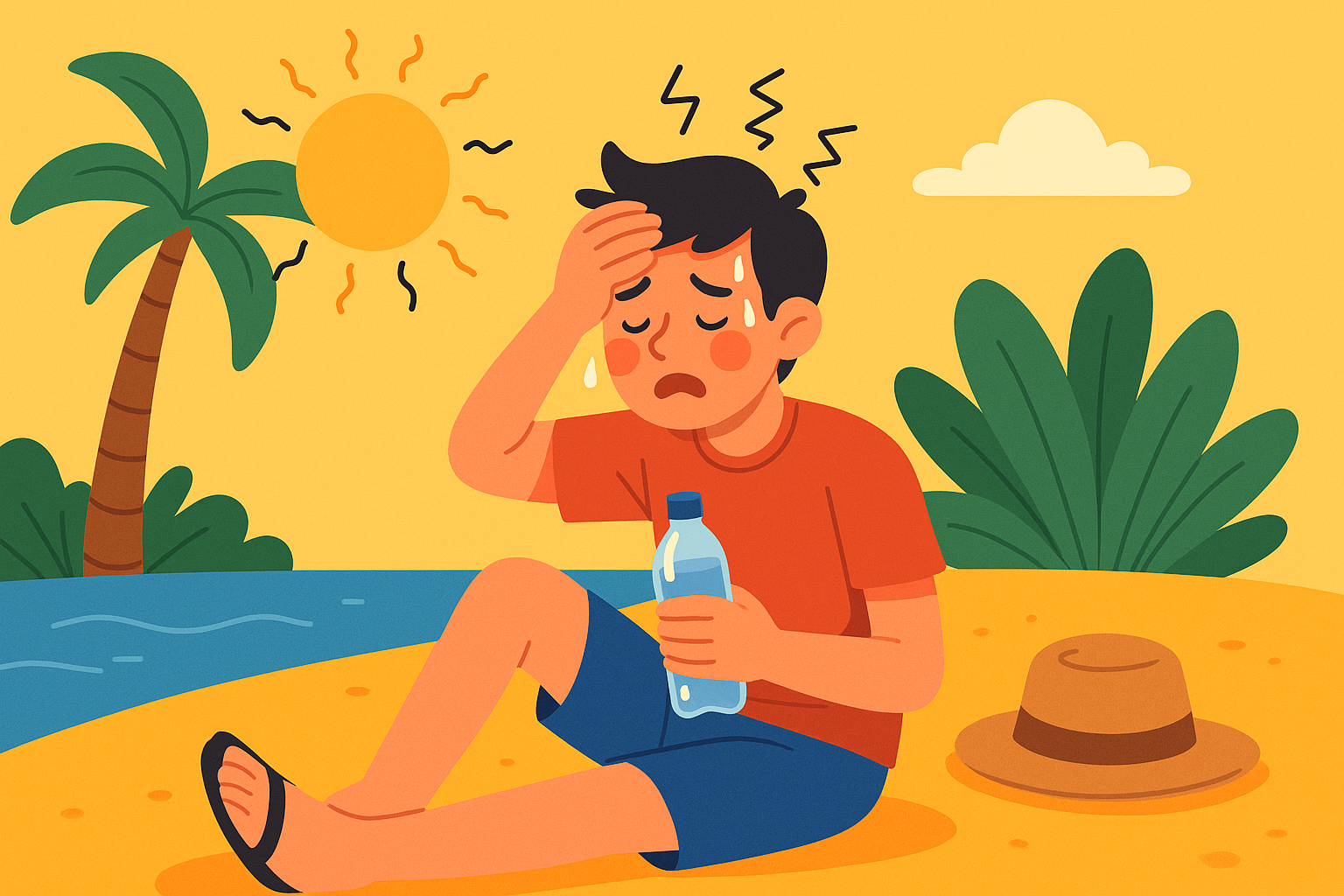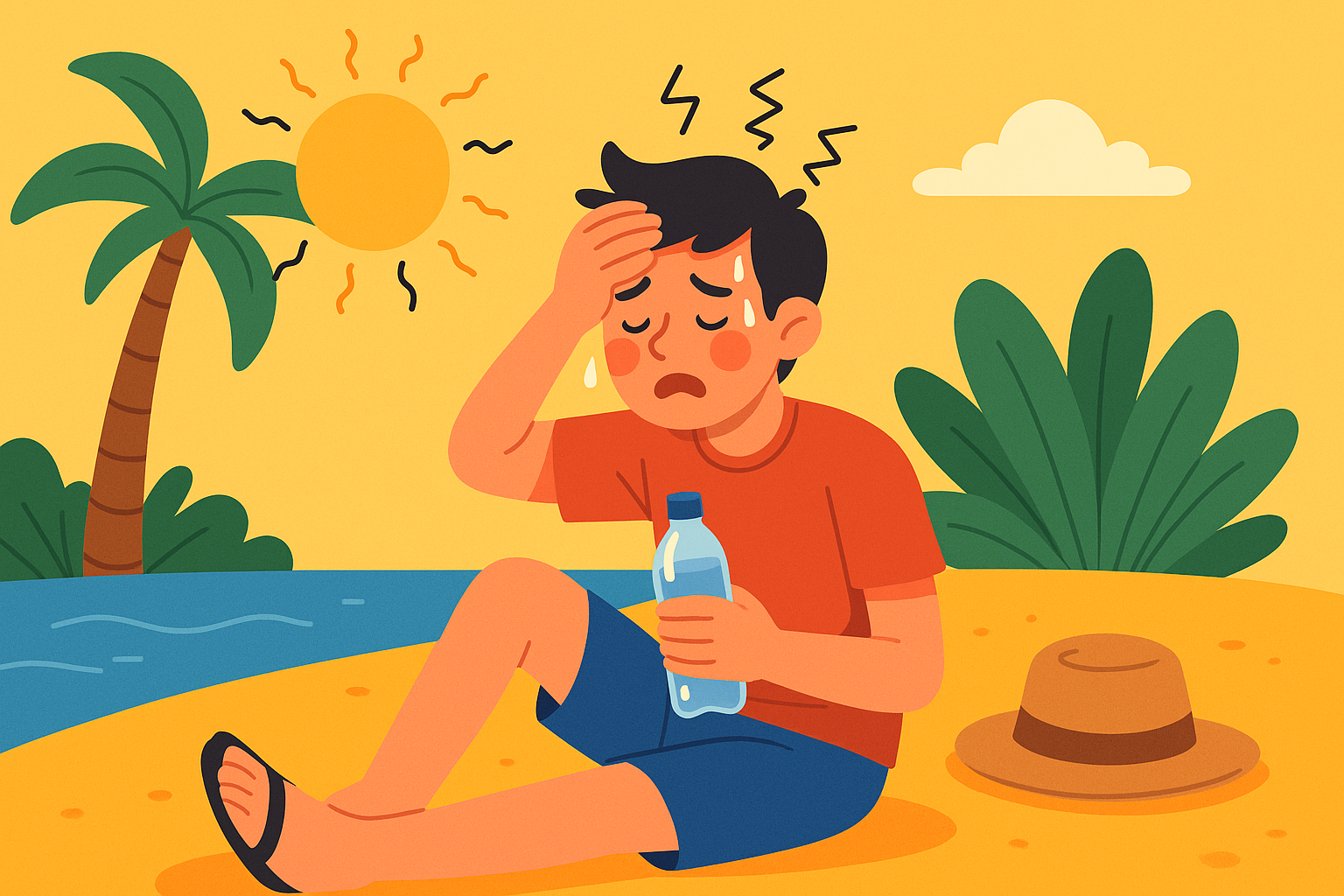

Spending too much time under direct sunlight, especially during peak hours, can lead to a condition called sunstroke. While it’s generally less severe than heatstroke, sunstroke can quickly escalate and cause serious complications if not treated promptly.
In this article, you’ll learn what sunstroke is, how it differs from heatstroke, what symptoms to watch for, and what first aid steps to take if it occurs.
What Is Sunstroke?
Sunstroke is a form of hyperthermia caused by prolonged, direct exposure to the sun—often affecting the head and disrupting the nervous system. It typically occurs when someone spends too much time outdoors without proper protection, such as a hat, sunscreen, or shade.
Unlike heatstroke, which is often triggered by the body’s failure to cool itself, sunstroke is more closely linked to radiation directly hitting the head and neck, leading to a moderate rise in body temperature and neurological discomfort.
Where Is Sunstroke Most Common in Mexico?
Sunstroke can happen anywhere, but it’s especially common in warm and sunny tourist destinations and coastal cities in Mexico, such as:
- Puerto Vallarta, Cabo San Lucas, and San José del Cabo, where beaches draw large crowds year-round.
- Mazatlán, Culiacán, and Mérida, known for their intense summer heat and humidity.
- Caribbean hotspots like Cancún, Playa del Carmen, and Cozumel.
- Inland cities such as Guadalajara, Chapala, Morelia, San Luis Potosí, Cuernavaca, Puebla, Monterrey, Mexico City, and the State of Mexico, where outdoor activity in direct sun can also lead to sunstroke.
If you live in or plan to visit these areas, sun protection is essential.
Symptoms of Sunstroke
Symptoms may vary depending on sun exposure and individual sensitivity, but common signs include:
- Throbbing headache
- Dizziness or light-headedness
- Hot, red, dry skin
- Nausea or vomiting
- Fatigue or confusion
- Moderate increase in body temperature (rarely above 104°F)
Sunstroke vs. Heatstroke: What’s the Difference?
Though related to heat, the two conditions differ significantly:
| Feature | Sunstroke | Heatstroke |
|---|---|---|
| Main cause | Direct sun exposure | Breakdown of internal temperature control |
| Body temp | Around 100.4°F – 104°F | Over 104°F |
| Sweating | May still be present | Typically absent |
| Neurological signs | Mild to moderate | Severe (confusion, unconsciousness) |
| Medical urgency | Moderate | High (emergency) |
First Aid for Sunstroke
If someone shows signs of sunstroke:
- Move them out of direct sunlight immediately.
- Place them in a cool, shaded, or ventilated area.
- Provide small sips of fresh water.
- Apply cold compresses to the forehead, armpits, and neck.
- Avoid alcohol or sugary drinks.
If symptoms don’t improve quickly or worsen, seek medical assistance.
When to Seek Home Medical Attention
If the person shows persistent vomiting, disorientation, extreme fatigue, or has pre-existing health conditions, it’s advisable to call a doctor for home care.
👉 At Doctor At Home México, we offer in-home consultations and IV therapy in all the cities listed above.
📲 Book a medical visit here
💧 Request IV therapy here
Conclusion
Sunstroke is a common condition in hot, sunny places—especially in parts of Mexico with intense sunlight and outdoor activity. Knowing the signs and how to respond quickly can prevent more serious problems.
If you’re in cities like Cancún, Guadalajara, or Mexico City, take precautions when spending time in the sun—and don’t hesitate to call a doctor if needed.
